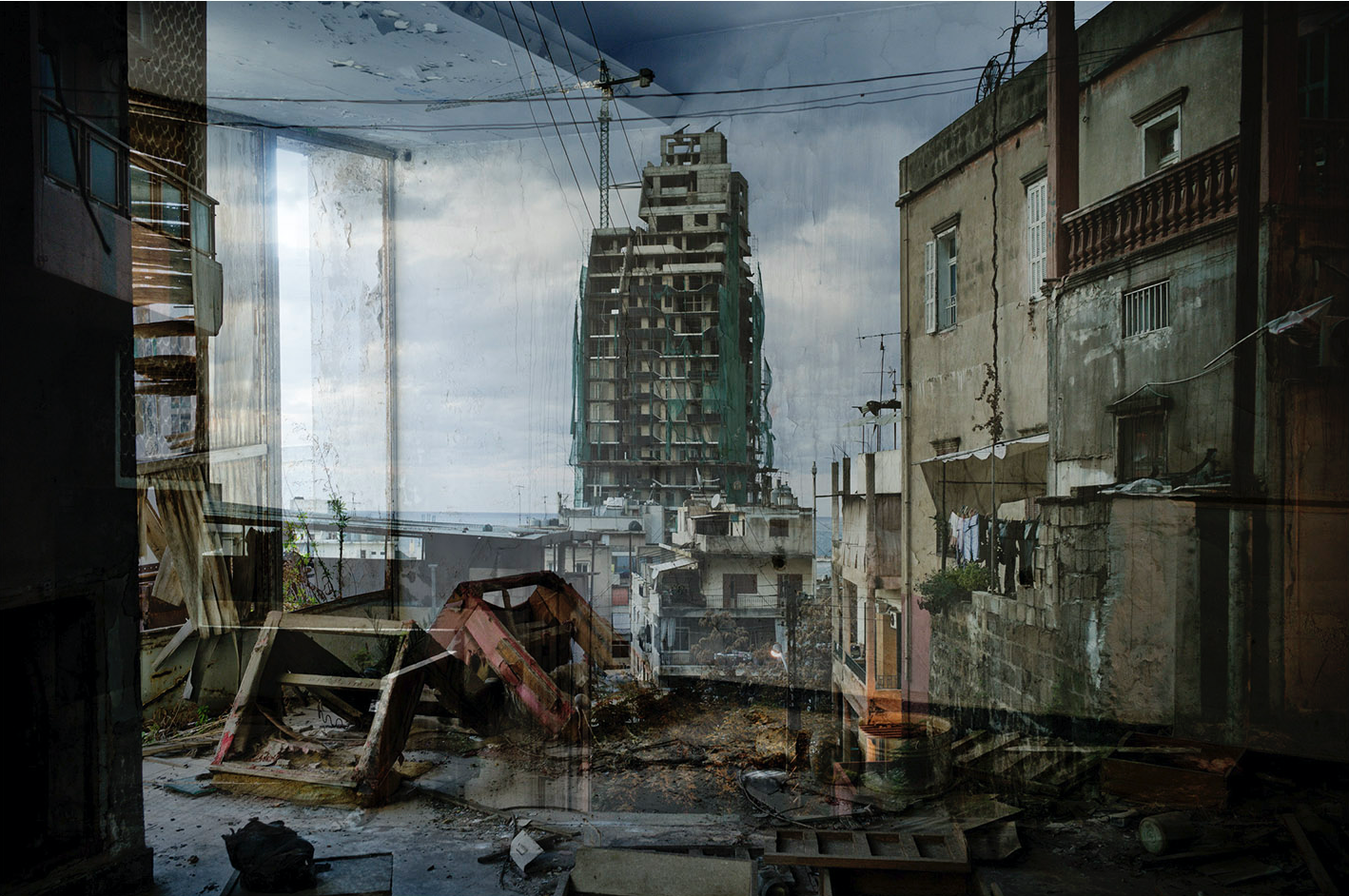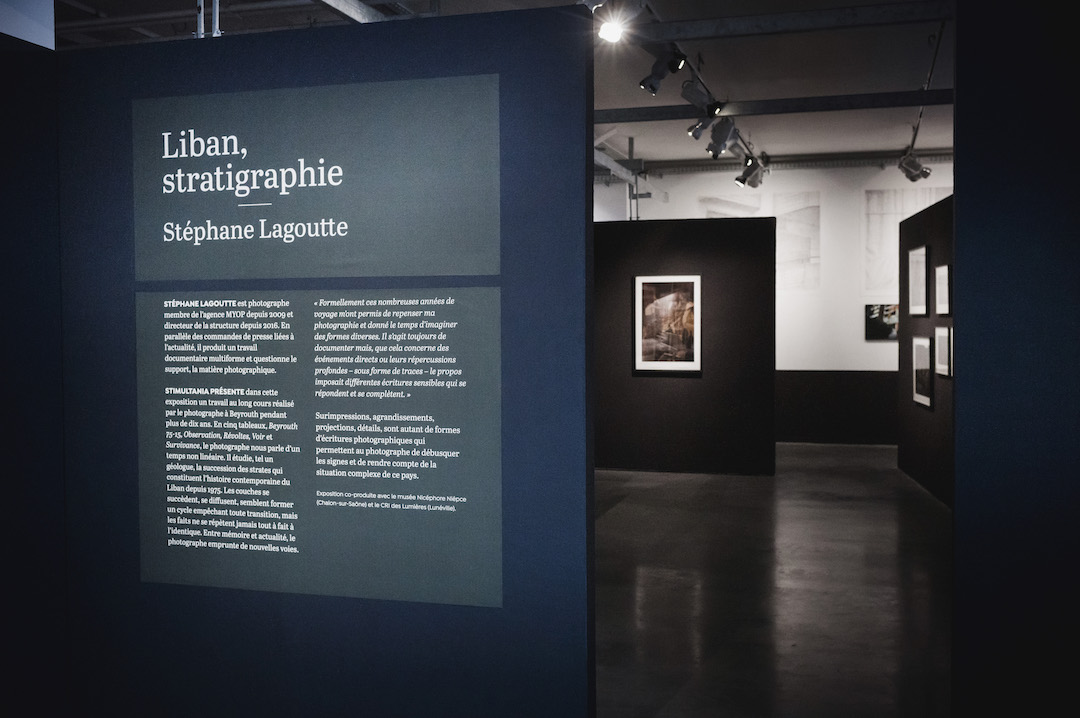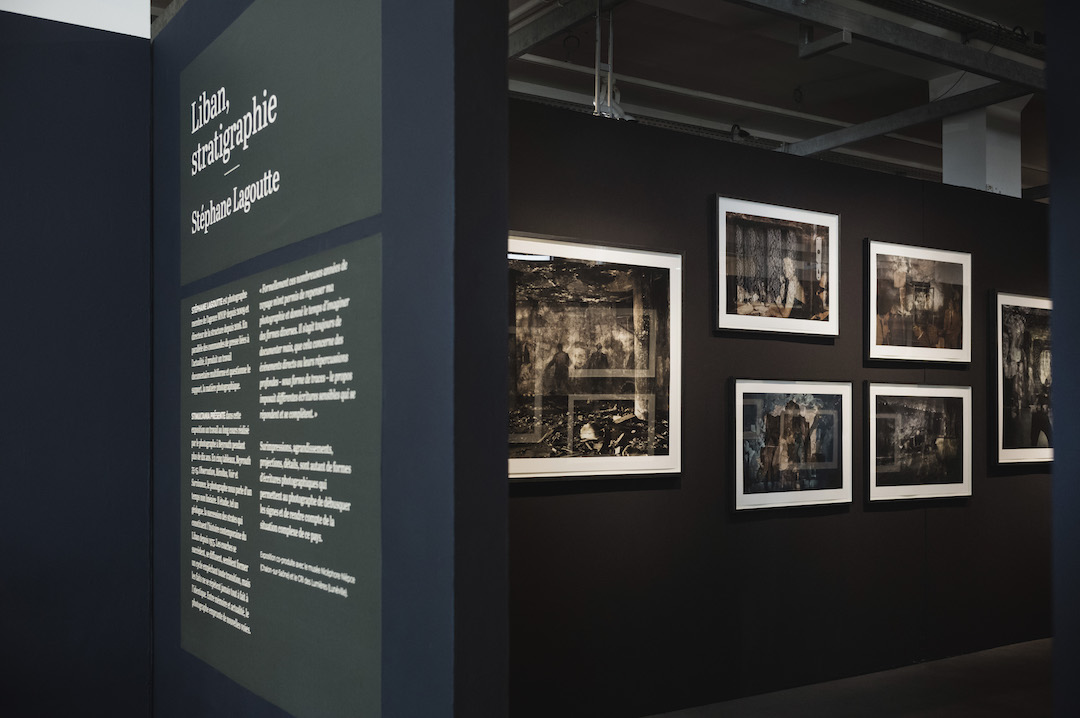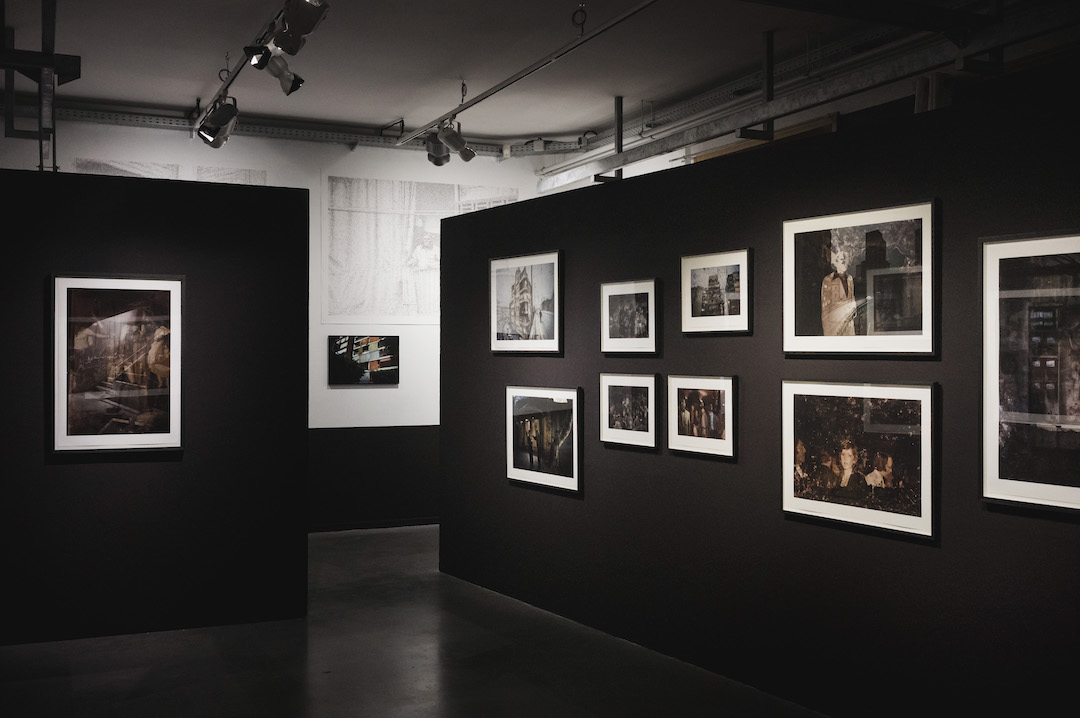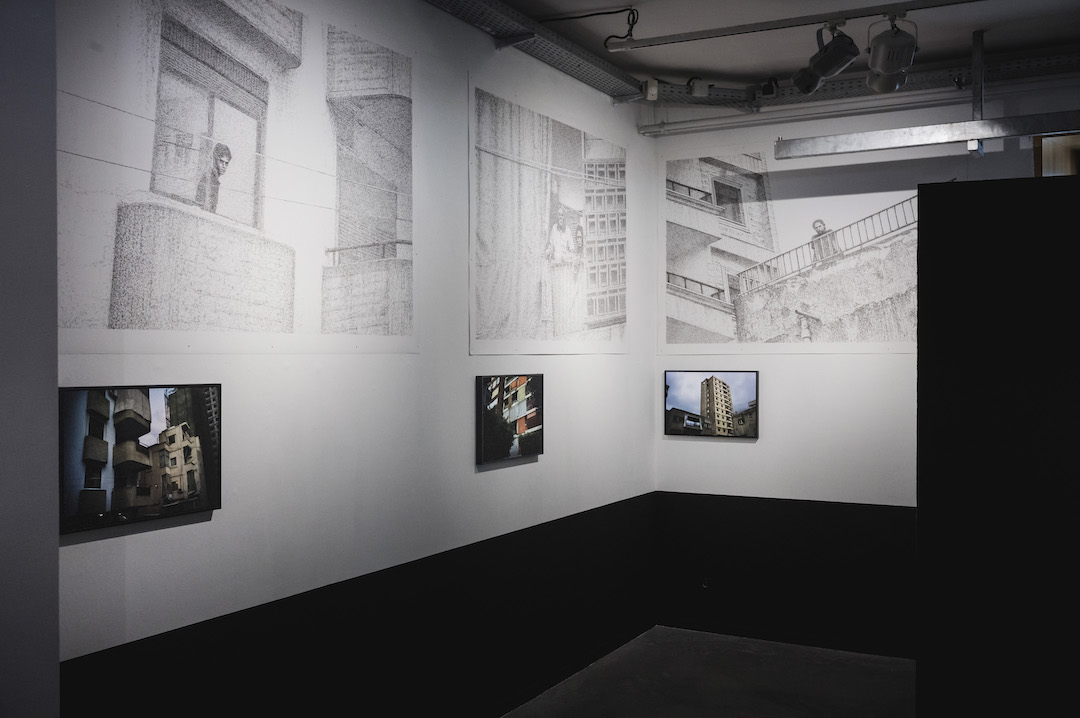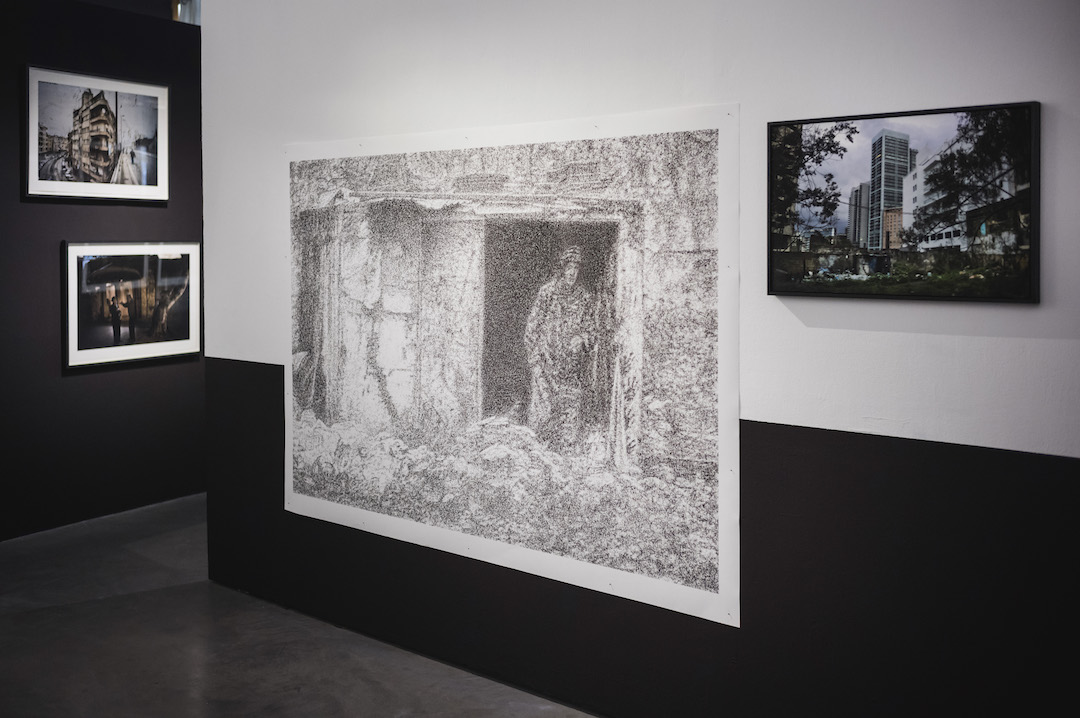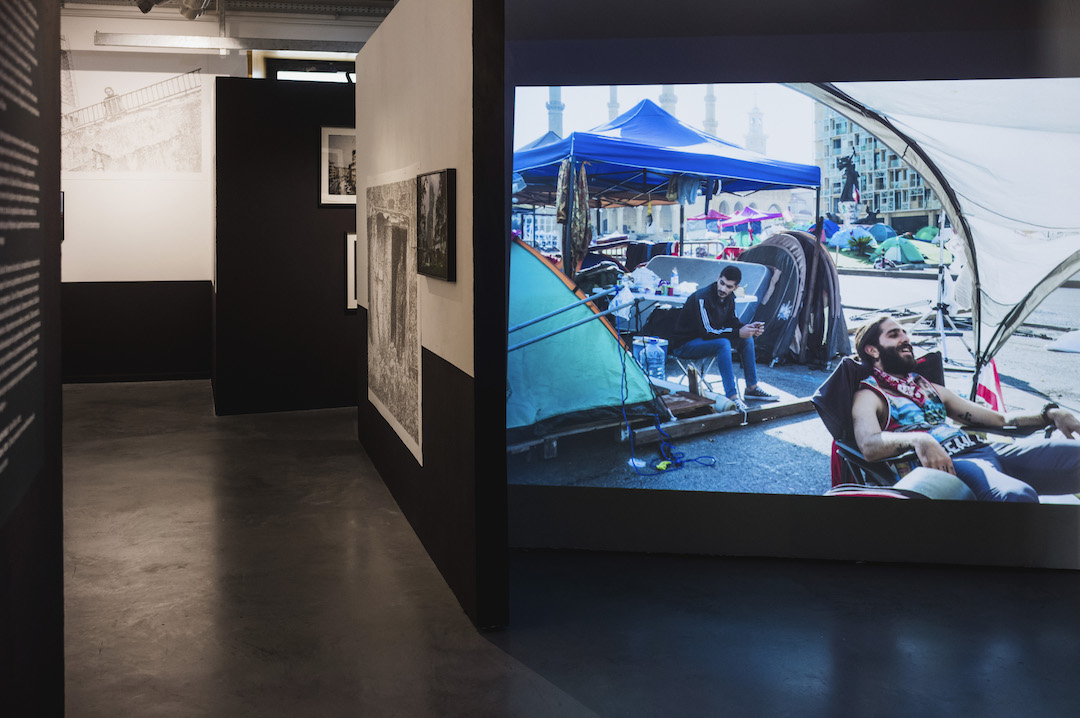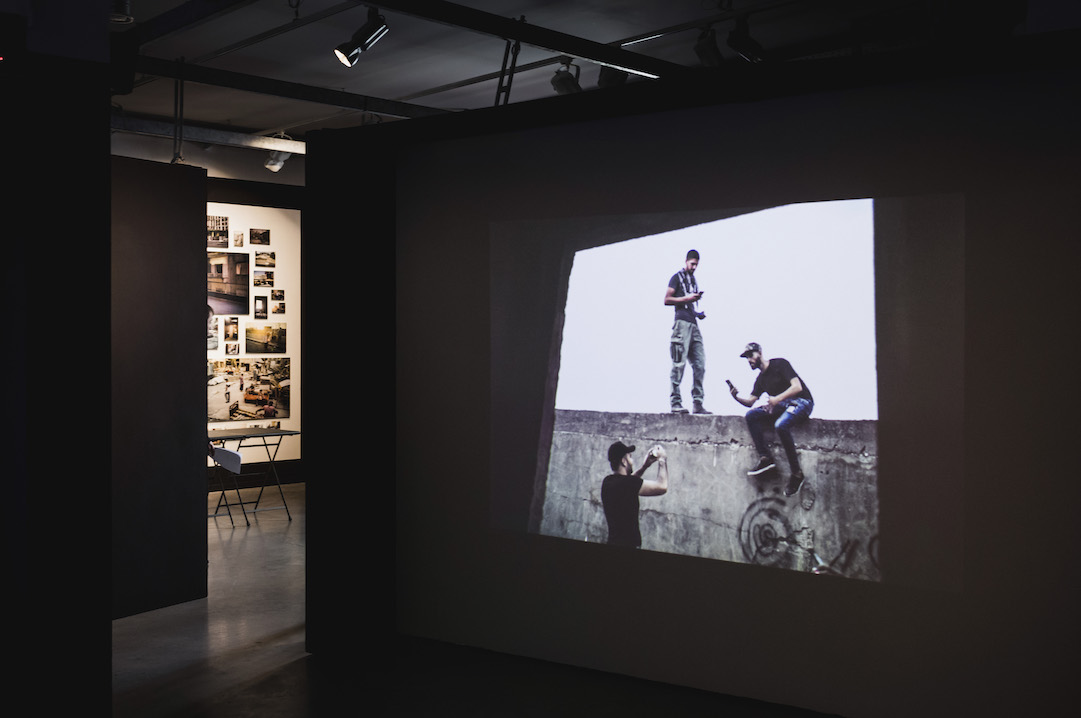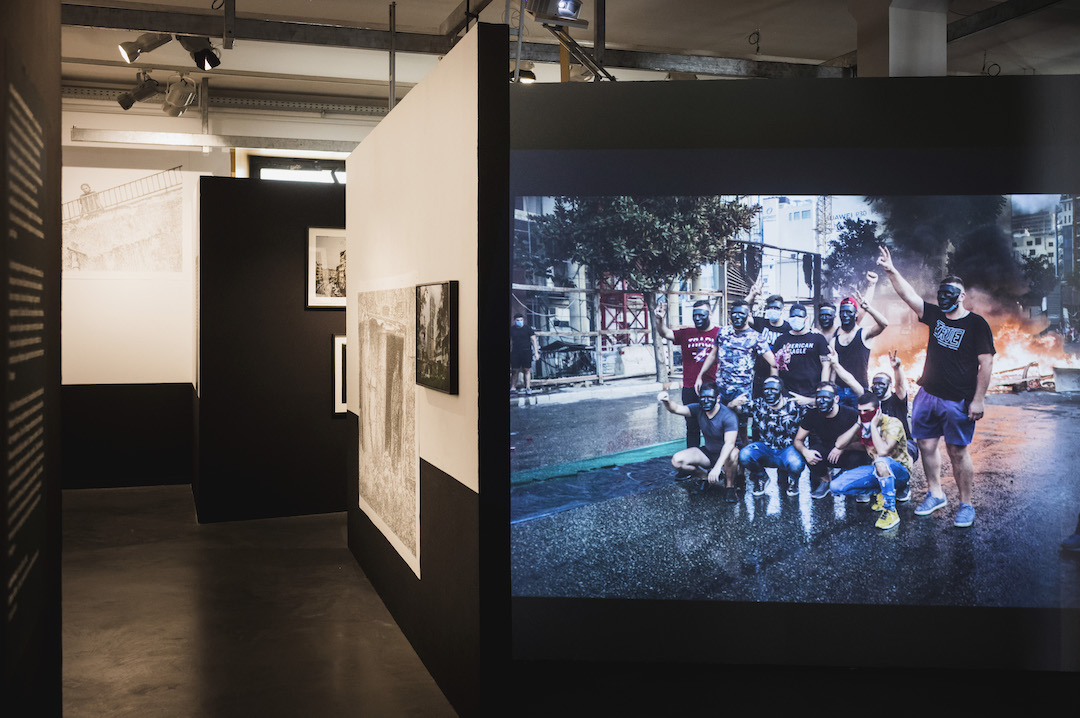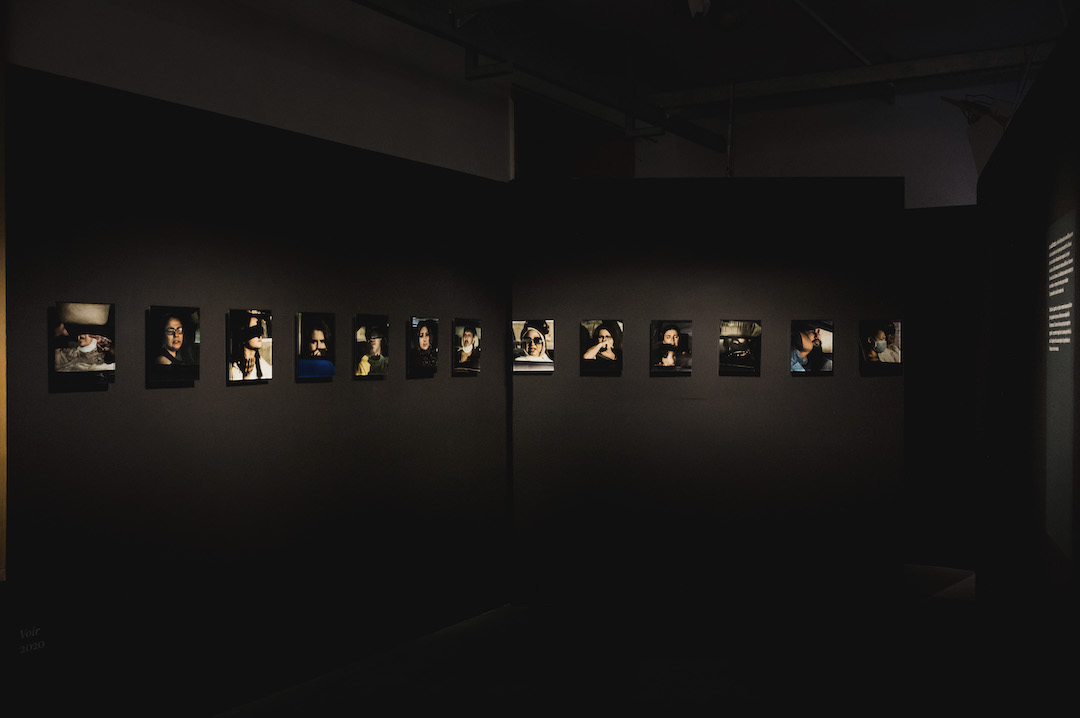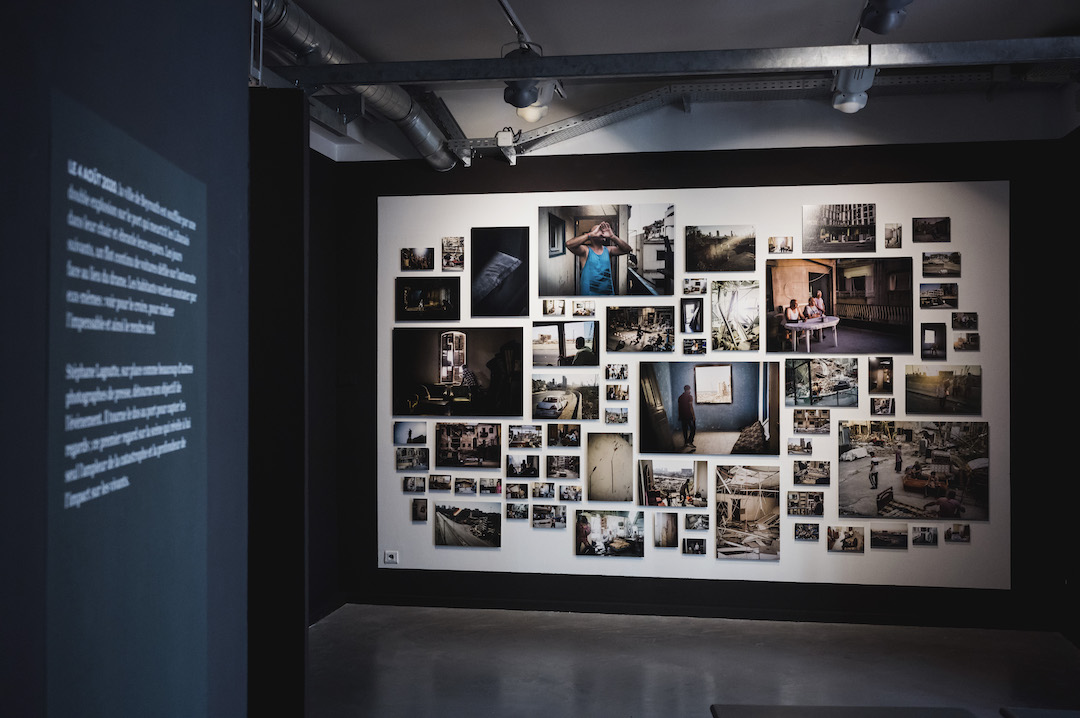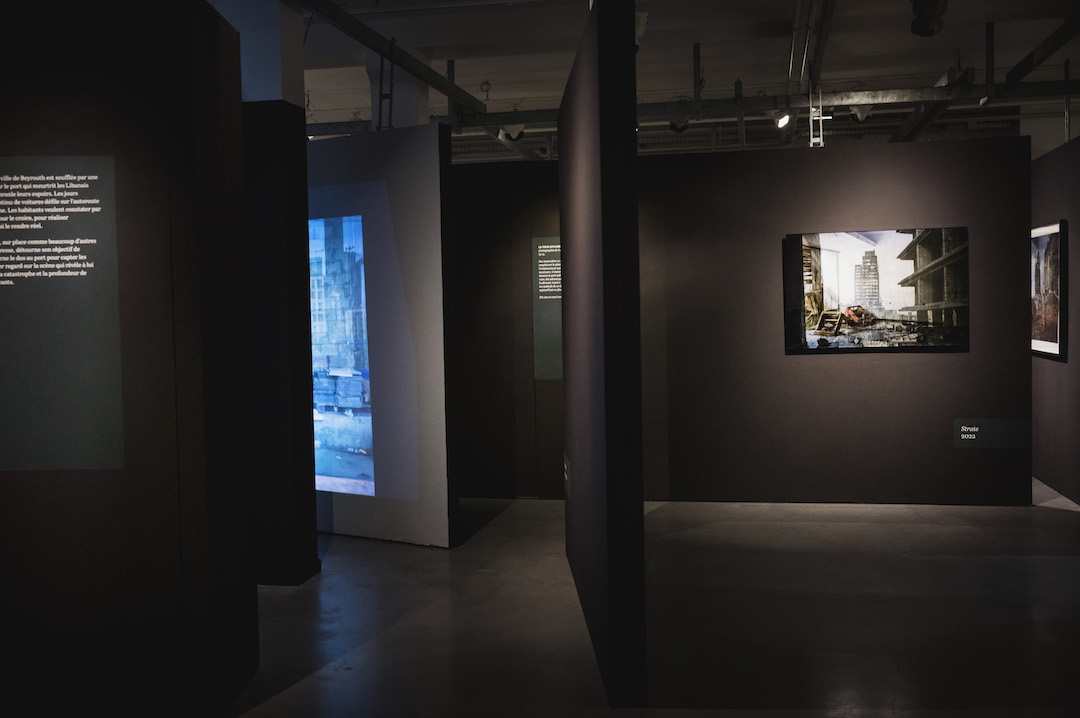VERNISSAGE
FRIDAY JANUARY 26, 2024
FREE ENTRY
FROM WEDNESDAY TO SATURDAY
14 p.m. - 18:30 p.m.
Co-produced exhibition by the Nicéphore Niépce museum in Chalon-sur-Sâone and the CRI des Lumières in Lunéville.
Curated by Emmanuelle Vieillard and Céline Duval.
The exhibition benefits from the support of Canson.
Exhibition presented au Musée Nicephore Niépce de Chalon-sur-Saône from 14.10.2023 to 14.01.2024
At Stimultania Strasbourg from 26.01/27.04.2024 to XNUMX/XNUMX/XNUMX
Au CRY of Enlightenment in Lunéville from 16.05 to 13.07.2024
In this exhibition, Stimultania presents long-term work carried out by photographer Stéphane Lagoutte in Beirut over more than ten years. In five tables, Beirut 75-15, Observation, Revolts, See et Survival, the photographer talks to us about non-linear time. He studies, like a geologist, the succession of strata which constitute the contemporary history of Lebanon since 1975.
Chaffeh Chaffeh.
All this is deposited in us, year after year, without us realizing it. The voice of Nadim Asfar, that of Rima Samman, of Yasmine Eid-Sabbagh, the stories of mountains, passes, borders, hiking trails, family albums and colored pencils, everything goes back, these real scenes or heard that charge us like a ship, the story of this meal in Dallas which will perhaps bring together Yasmine's – or Rima's – four aunts, the angry crowd, Ibrahim Maalouf's trumpet when he enters the stage and that M shouts his name, the uncle's stories, the sweetness of Bachar Mar-Khalifé's voice. Sabyl did you see the news? Yes he saw them, it was impossible not to see them. Do you think words wear out?
While the aunts call each other on WhatsApp, Stéphane Lagoutte joins his wife in Beirut. For ten years, he made images to tell what he understood. The press photographer, met during the beautiful exhibition Back to blackk, in 2021, walks, looks up, squints, rushes into abandoned hotels, gets closer to the flames and stops on the city's bridges.
The five paintings, presented for the first time together thanks to the partnership of three cultural institutions – the Nicéphore Niépce museum, Le Cri des Lumières and Stimultania – tell a story that begins and ends in exactly the same place, on the same image.
“The peaks around us were bright and looking away, indifferent to our miseries, for millennia. This is what I have never managed to make my children understand about my fascination with these landscapes: this silence, this immense peace of the mountains, as the ultimate witnesses of what the eternal stasis of the planet must have been before the the irruption of time and History, and before the disorder, ruin and entropy that men have continued to reproduce since they began to be agitated on the Earth. »
Chaffeh Chaffeh.
Beirut 2020, Journal of a collapse, Charif Majdalani, Actes Sud, 2020
Celine Duval
The layers follow one another, diffuse, seem to form a cycle preventing any transition, but the facts are never repeated quite identically. Between memory and current events, the photographer takes new paths.
« Formally, these many years of travel have allowed me to rethink my photography and given me time to imagine various forms. It is always a question of documenting but, whether it concerns direct events or their profound repercussions – in the form of traces – the subject imposes different sensitive writings which respond to and complement each other. »
Overprints, enlargements, projections, details, are all forms of photographic writing which allow the photographer to uncover the signs and reflect the complex situation of this country.
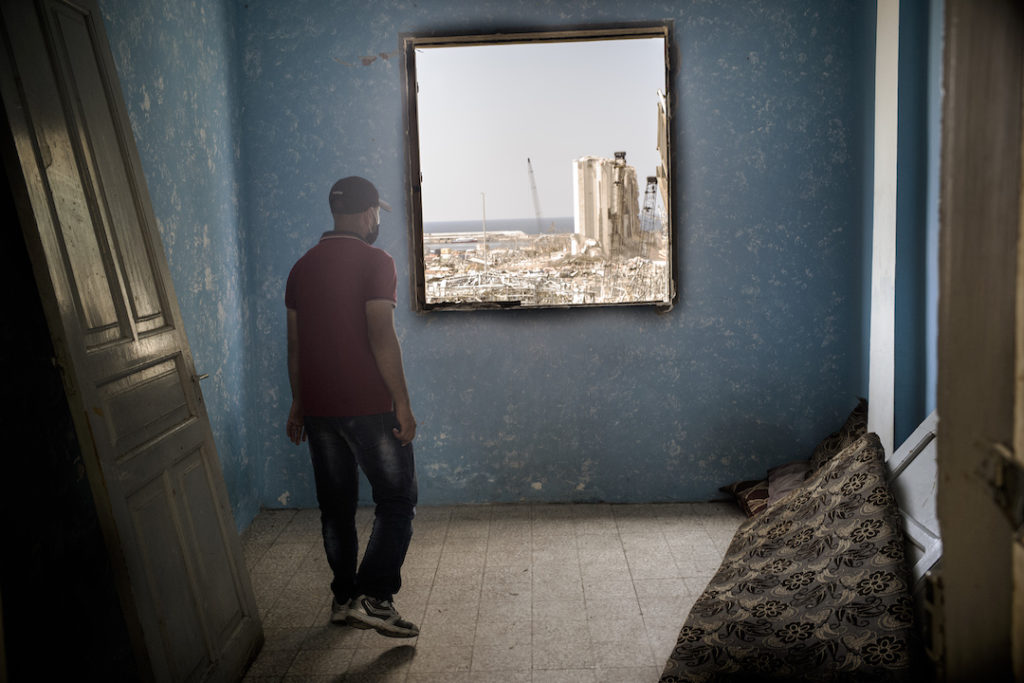
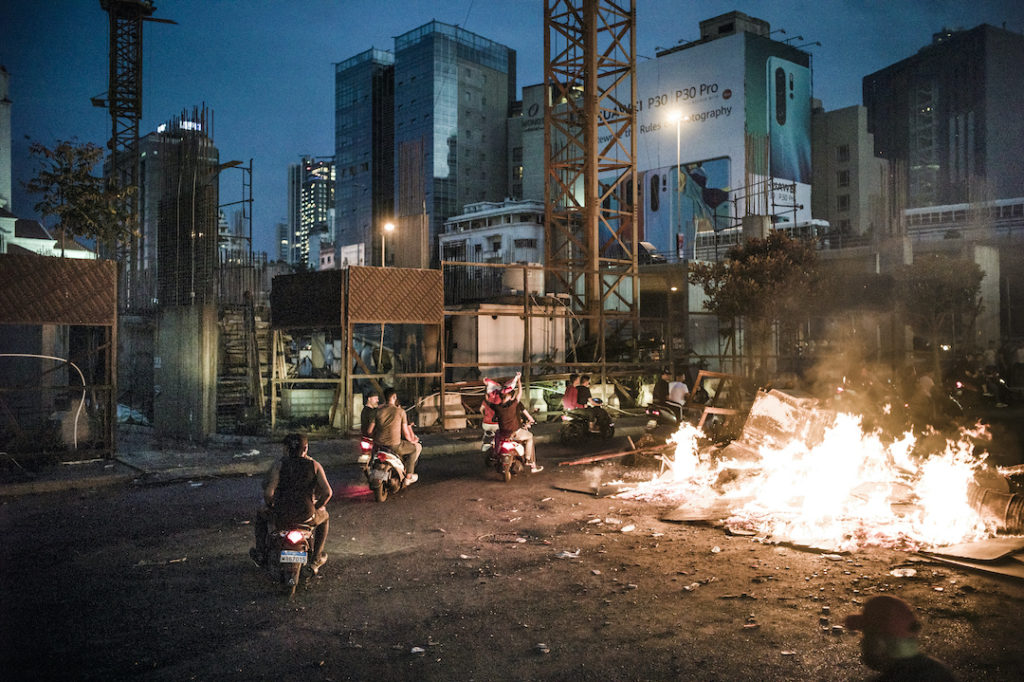
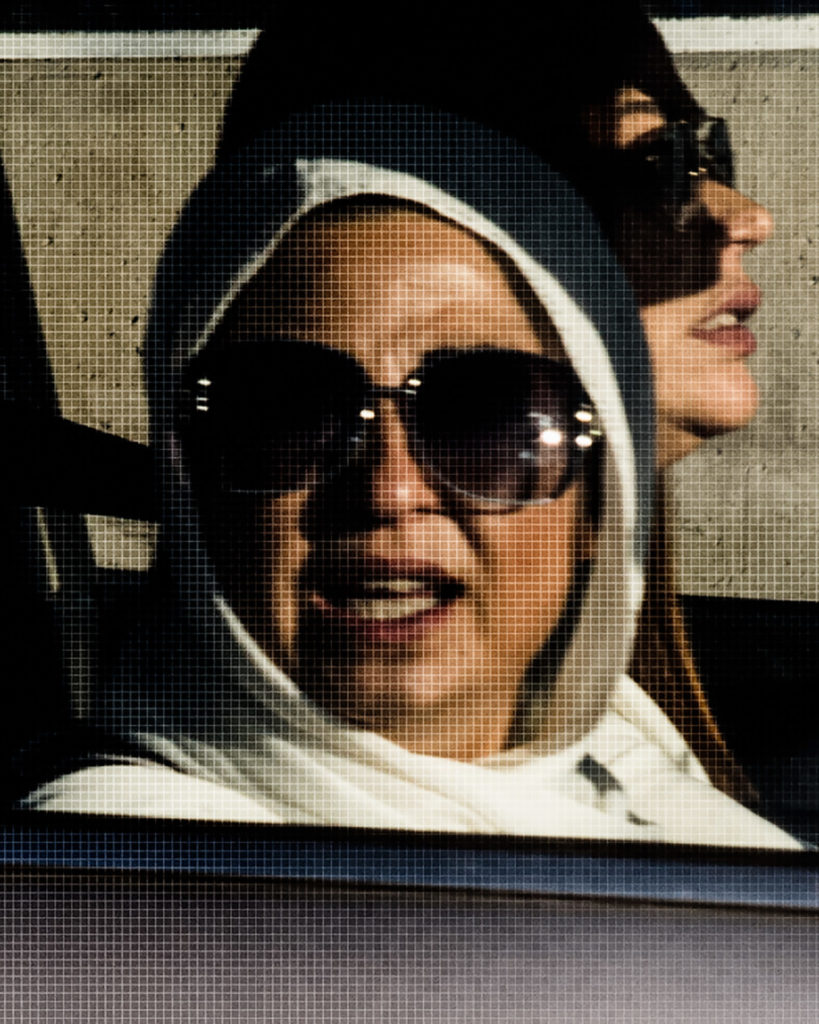
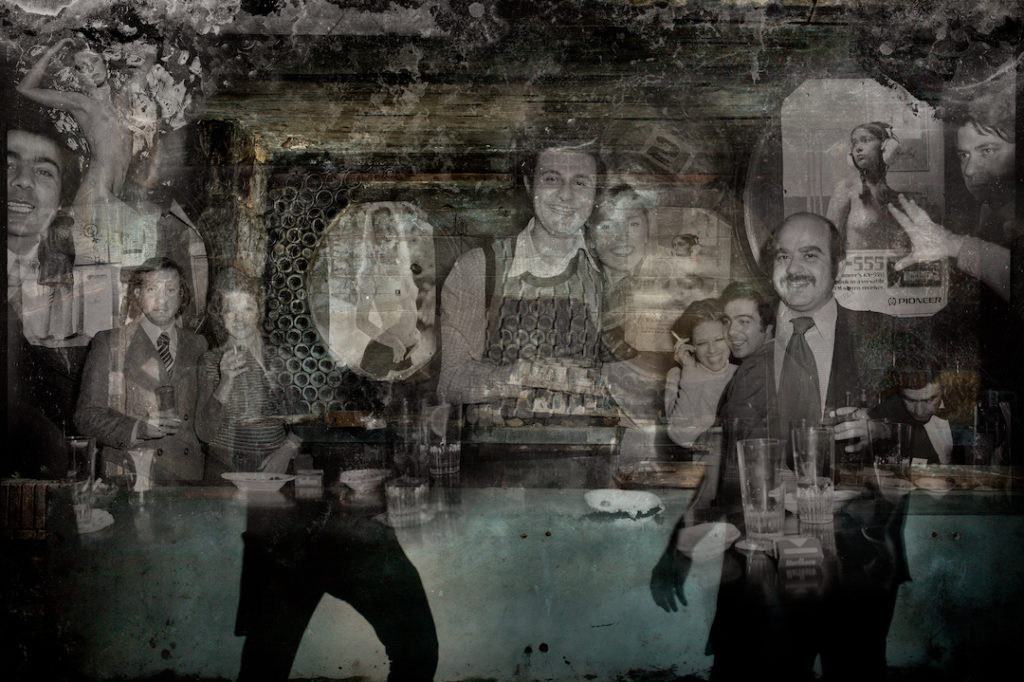
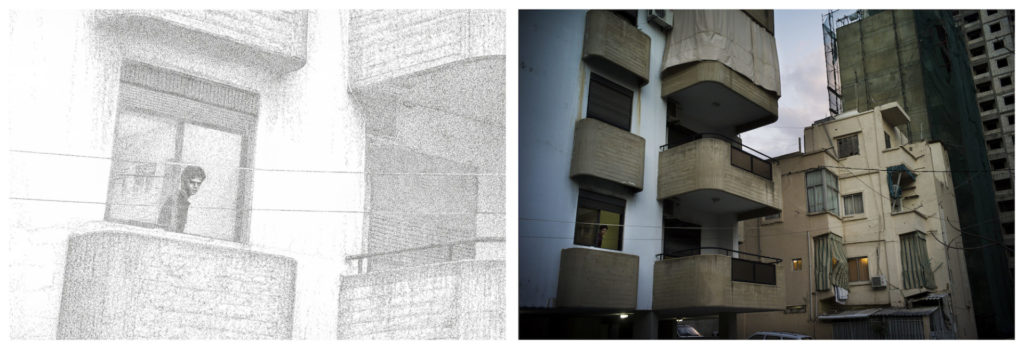
Exhibition views © Stéphane Lagoutte
Beirut 75-15
2015
The photographer falls in love with a woman who takes him to Beirut, Lebanon. He is amazed by the city, a confluence of the present, the past, history, the archaic. He takes out his camera. He does his job. It burrows and weaves and slips through gaps.
Intertwined streets, figures in their windows, buildings riddled with painful memories. For love the photographer goes astray. Abandoned luxury hotel, uncertain stairs and down, in the hidden part of the city, a discotheque sleeping under a shroud of dust. There, alongside indefinable concretions, he comes across the negative films of another photographer, perhaps dead, the images of a ghost in short.
For three years, the photographer returned and roamed the Lebanese streets. The images accumulate but are not enough. The device remains sterile, that's not okay.
Back in Paris, he carefully exhumed the old, forgotten negatives one by one. Suddenly another life appears. Men and women dance, drink alcohol and talk, laugh, love each other. They are not afraid yet. This is life before 1975. Before this civil war from which no one will emerge unscathed.
So like a couple who reunite after years of separation, the images of today overlap with those of yesterday. Beirut 1975 – 2015. Temporal superposition, two solitudes meet and embrace. Thus, the photographer, Stéphane Lagoutte, since it is about him, manages to weave an augmented and moving present.
His images do not bear witness, they act. They do not stop time, they unfold it.
Samuel Sweet.
Observation
2011 – 2014
Photographing the streets of Beirut arouses suspicion and distrust. Even in the streets without a sensitive place, without a story, the photographer sees eyes falling on him. He feels watched, considered a potential danger, an individual whose intentions are not very well defined. Observed by anonymous people at their window, on their balcony, he shifts his gaze and, in turn, observes them. He then records these suspended moments in the city through photography.
Returning to his workshop, Stéphane Lagoutte decides to give these individuals their place again. To write them into History in a way that is both poetic and political, he draws them, one by one, meticulously, in Indian ink. Each character then takes on another dimension, a monumental size like historical painting. These anonymous people become the heralds announcing the acts of a tragedy which, inexorably, marks the history of Lebanon.
Revolts
2019 – 2020
The protests begin on the evening of October 17, 2019. A “WhatsApp” tax is the trigger for a protest movement among the population, demanding political and structural change. Stéphane Lagoutte is on site and follows the events until the resignation of the government. Photographs of these first weeks of collective mobilization reveal a strong feeling of unity against the ruling classes and peaceful protest.
The photographer returns to the site in February 2020. Banks have stopped allowing their customers to access their accounts, the unemployment rate and poverty are increasing, Lebanon is facing a period of unrest. The occupied streets and squares no longer carry the same fervor, but the population continues the fight; a fight that Stéphane Lagoutte attempts to transcribe through images.
« It was 8 a.m., the demonstrators were trying to block access to parliament, under water hoses and tear gas. I had the strange feeling that the Lebanese people were already at work. Like a duty. That of resisting, of expressing anger, of refusal. It was before the problem of the pandemic, it was before the explosion at the port which confirms the justice of their fight. A fight which violently clashes with the interests of the leaders, led by a people who no longer have the means to live resignedly. »
See
2020
On August 4, 2020, the city of Beirut was blown away by a double explosion at the port which bruised the Lebanese to the core and shook their hopes. The following days, a continuous stream of cars paraded on the highway in front of the scene of the tragedy. The inhabitants want to see for themselves: seeing is believing, to achieve the unthinkable and thus make it real.
Stéphane Lagoutte, on site like many other press photographers, turns his lens away from the event. He turns his back to the port to catch the eye; this first look at the scene which alone reveals the scale of the catastrophe and the depth of the impact on the living.
Survival
2020
Ten days after the explosion, Stéphane Lagoutte collected testimonies, recorded the stigmata, probed souls. “The residents of the devastated neighborhoods speak to me, like a catharsis, and I photograph them in their enthusiasm, their amazement. […] The facades of the houses are on the ground, the buildings are deserted. No demonstrations today. I am told there is too much to do. »
After studying at the Beaux-Arts, Stephane Lagoutte turns to documentary photography. From the field of information journalism, on the margins of society, he is mainly interested in the relationship between man and his environment. His photography is multifaceted today: from the press to galleries and museums, he navigates between traditional reporting and conceptual photography.
For 10 years Stéphane Lagoutte has been documenting Beirut. In five series, he studies the succession of strata which constitute the contemporary history of Lebanon. And if they seem to mix, the facts are never repeated quite identically.
Between memory and current events, the photographer takes new paths. Overprints, enlargements, details, new forms of writing respond to and complement each other to reflect the situation in the country.
